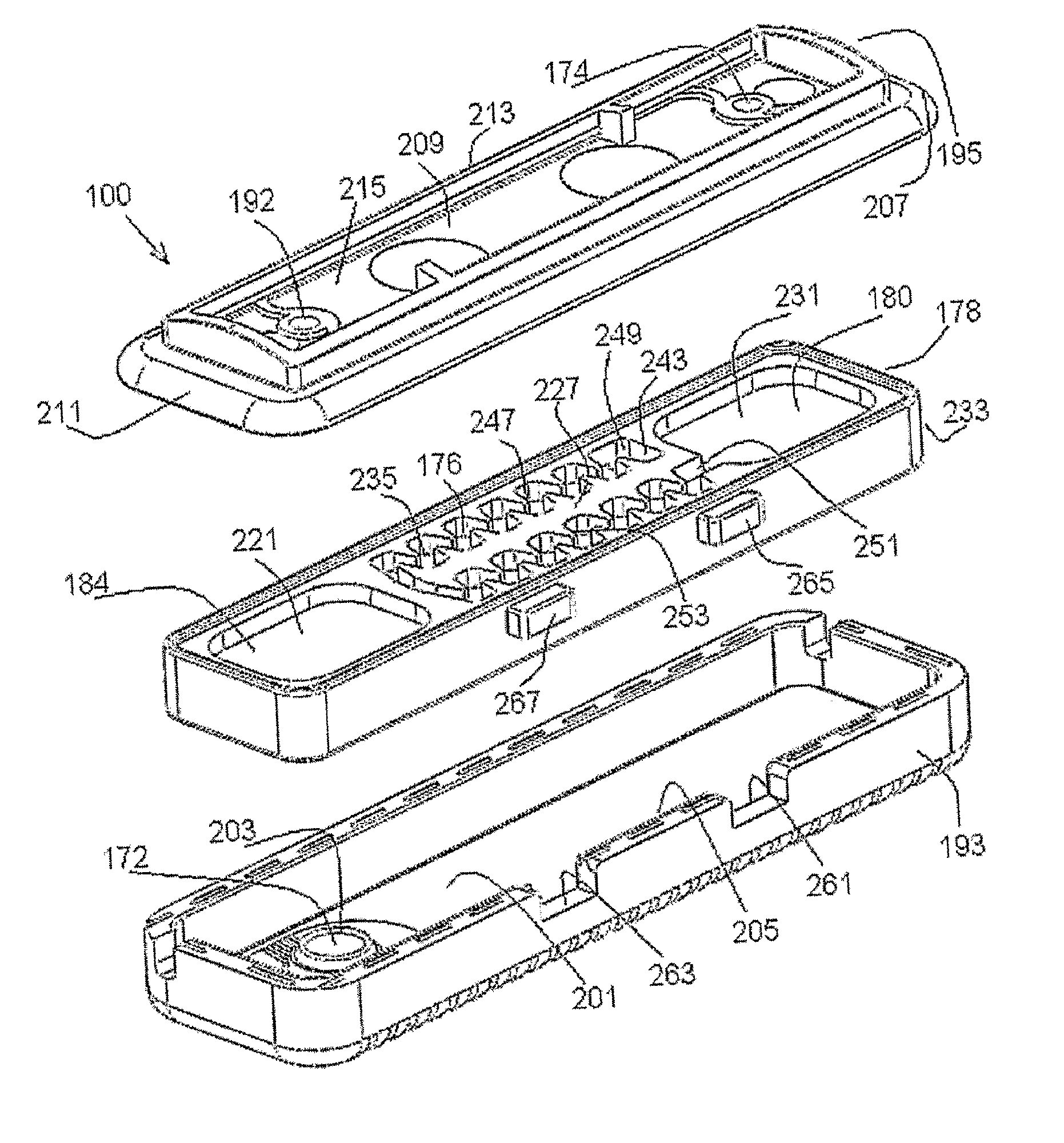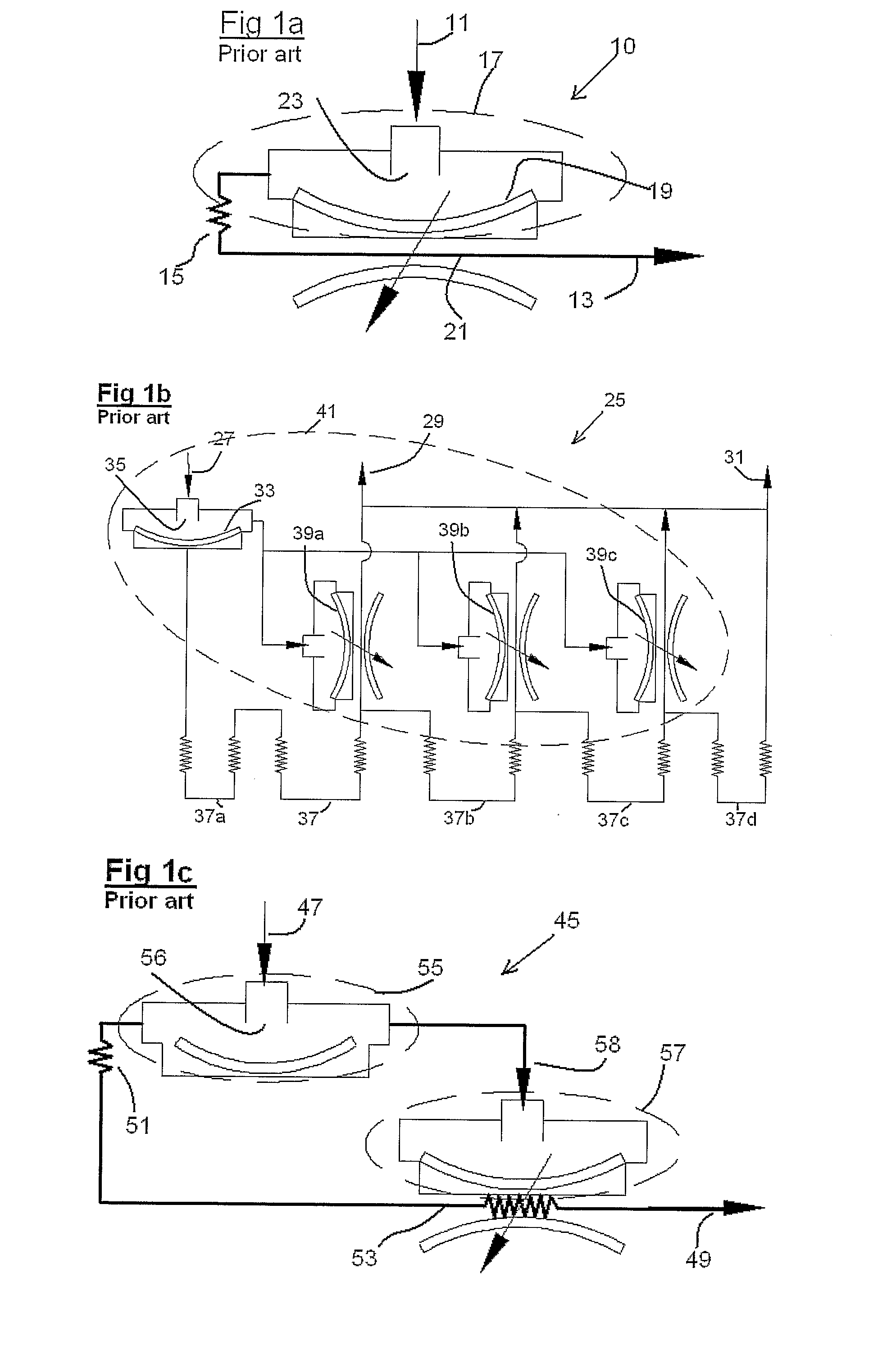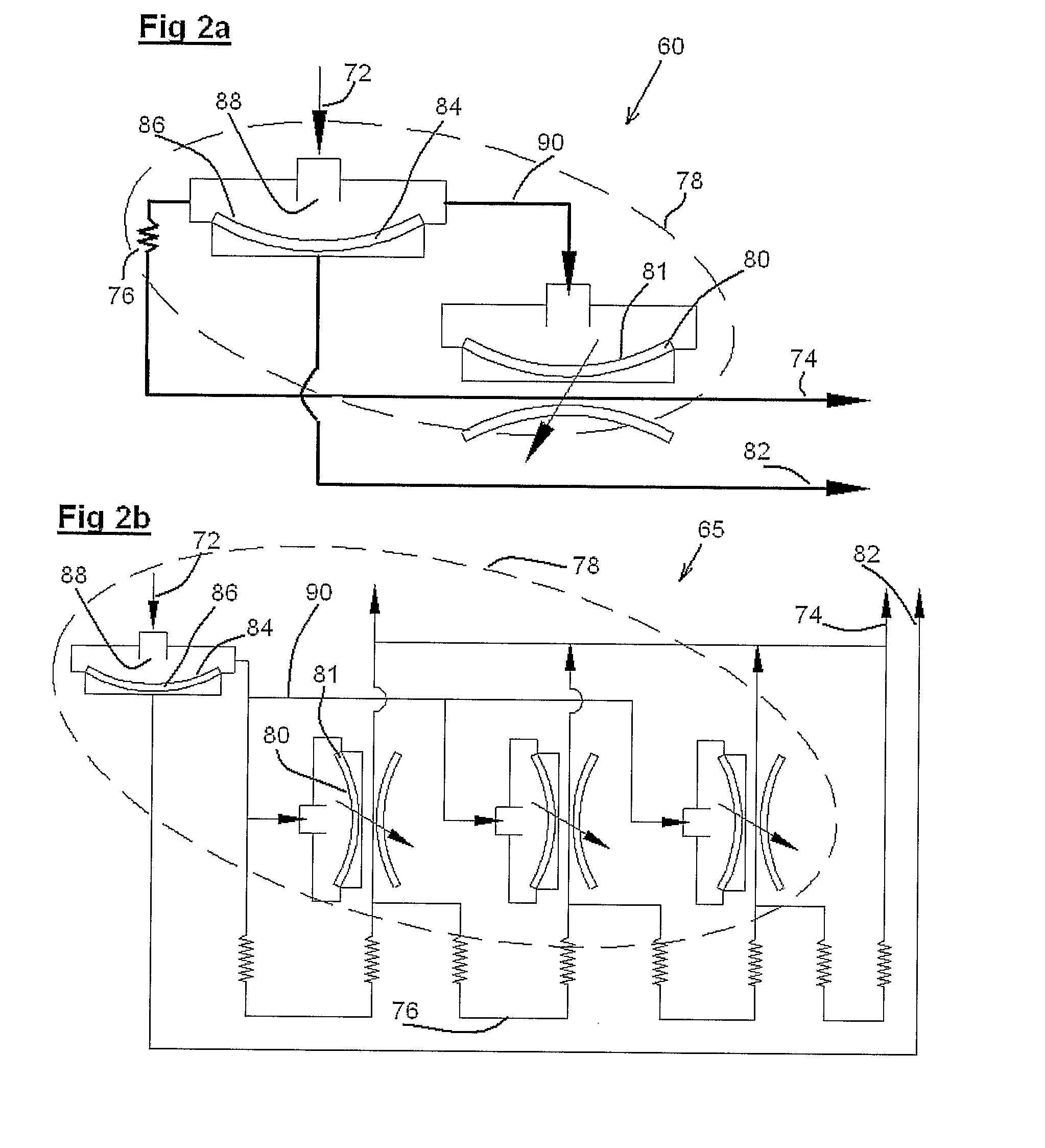Drip emitter with an independent non-drain valve
a drip emitter and non-drain valve technology, applied in the field of drip emitters, can solve the problems of increased water pressure in the area, clogging of the drip emitter, additional challenge of the irrigation system, etc., and achieve the effects of easy manufacturing and assembly of the unit, low cost, and large flow passages
- Summary
- Abstract
- Description
- Claims
- Application Information
AI Technical Summary
Benefits of technology
Problems solved by technology
Method used
Image
Examples
Embodiment Construction
[0053]Referring to FIGS. 2a to 2c. These figures constitute schematic illustrations of examples of regulated drip emitters with an independent non-drain valve, in accordance with the present invention. Any professional in this field would be able to evaluate the constructional characteristic of the present invention, the method of its operation and the important differences between it and the prior art from comparing these figures to the schematic illustrations of examples of regulated drip emitters equipped with non-drain valves in accordance with the prior art, as this prior art was explained above, in the “Background of the Invention” chapter, while referring to FIGS. 1a to 1c.
[0054]A schematic view of a drip emitter 60 is presented in FIG. 2a. Drip emitter 60 is of the kind in which a regulating mechanism is implemented, one that increases or decreases the dimensions of the flow passage of the water, after the water passed and emerged from the throttle means, towards the water ...
PUM
 Login to View More
Login to View More Abstract
Description
Claims
Application Information
 Login to View More
Login to View More - R&D
- Intellectual Property
- Life Sciences
- Materials
- Tech Scout
- Unparalleled Data Quality
- Higher Quality Content
- 60% Fewer Hallucinations
Browse by: Latest US Patents, China's latest patents, Technical Efficacy Thesaurus, Application Domain, Technology Topic, Popular Technical Reports.
© 2025 PatSnap. All rights reserved.Legal|Privacy policy|Modern Slavery Act Transparency Statement|Sitemap|About US| Contact US: help@patsnap.com



